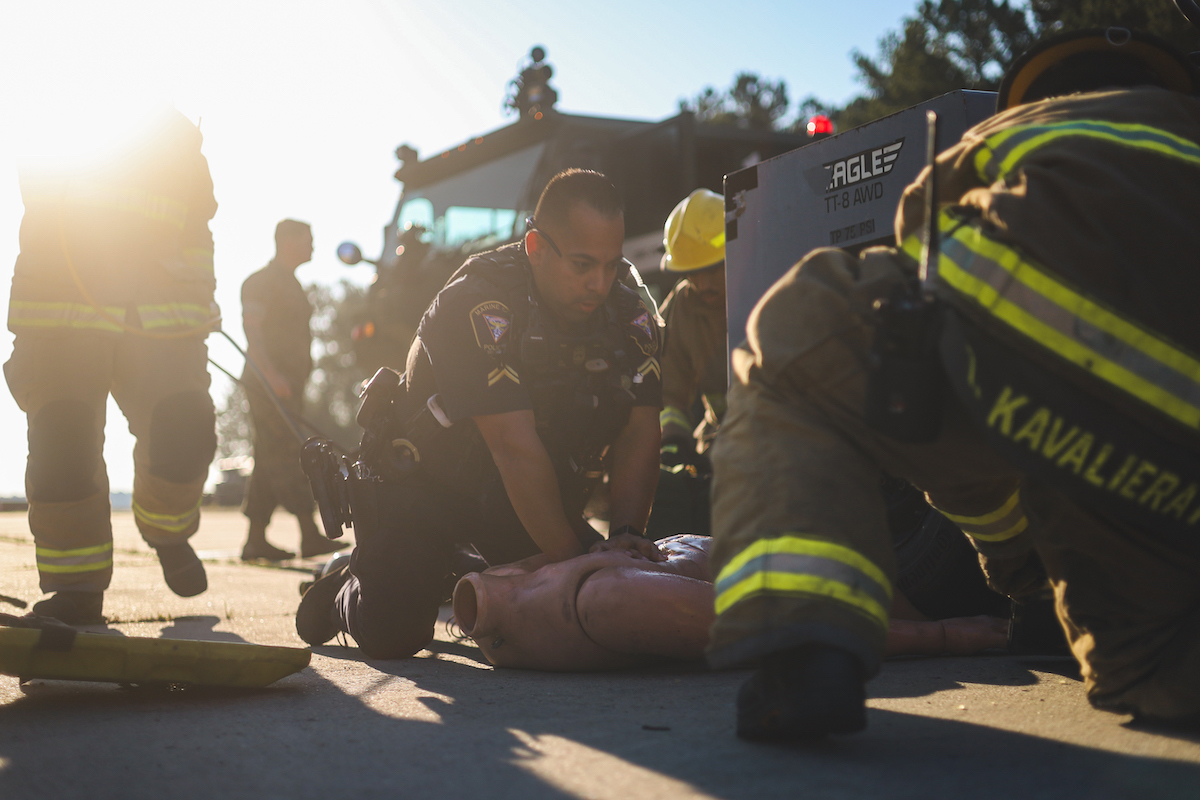By Larry Dandridge
Editor’s note: This article is the first in a series of five.
I receive many phone calls, emails, and text messages each week, asking me about VA service-connected disability compensation. This article is the first in a series of five that will provide a refresher course on the steps to follow when filing a claim for service-connected disability compensation. It also provides a “Call to assist veterand and their families” because some veterans and their dependents and survivors are too ill, too impaired, not computer literate, do not have a computer, do not have access to the internet, may not have a phone, may be homeless, do not text or use email, thus making it more important for family members, friends. Veterans service organizations, the VA, and VSOs collaborate to locate and assist these veterans.
The information in this article is based on
- The VA “Welcome to VA.gov” website https://www.va.gov.
- The VA “Welcome Kit” (June 2025 Guide version 4), https://bit.ly/3KE4MDp.
- The Veterans Health Administration (VHA) webpage (https://www.va.gov/health/).
- The “2025 Federal Benefits Guide for Veterans, Dependents, Survivors, and Caregivers” at https://bit.ly/46TE6G1.
- The VA “Podcast Network” (https://news.va.gov/va-podcast-network/).
- The VA “YouTube SITREP” (https://www.youtube.com/@VAmadesimple).
- The VHA “YouTube channel” (https://www.youtube.com/user/VeteransHealthAdmin).
- The VA “Facebook” site (https://www.facebook.com/VeteransHealth/).
- The VHA “Twitter Veterans Health” webpage (https://www.va.gov/health/social/twitterdisclaimer.aspTwitter and https://x.com/VeteransHealth).
- The VA Blog “VA NEWS” webpage at https://news.va.gov.
- Discussions with VA-accredited Veterans Service Officers (VSOs).
- More than 250 articles I have written, over the past five years, for The Island News on veterans’ benefits and how to apply for those benefits. You can read my past articles at https://www.yourislandnews.com; click on Military.
Things to do while in the military
1. Keep a copy of all the documentation (evidence) of a service connection. Veterans should keep all records of service-connected wounds, injuries, illnesses, traumas, Hazardous Material Exposures/Contaminations (and resulting injuries/illnesses), traumatic events/injuries, scars, and medical conditions. This includes military medical records, military personnel records, accident reports (aircraft, vehicle, workplace, OSHA), incident reports, line of duty investigation reports, Incident Reports, Purple Heart Awards, Enlisted Efficiency Reports, Officer Efficiency Reports, pictures (injuries/damaged equipment, etc.), Operational Hazard Reports, and other records that can be used to prove the event, wound, injury, illness, HAZMAT exposure, trauma, happened and what caused or worsened the condition..
This must include (1.) health conditions that the veteran had before beginning military service that were worsened by military service; (2.) conditions, injuries/wounds, illnesses, traumas, scars, events that happened during military service; and (3.) conditions that showed up after leaving military service, like cancers caused by Agent Orange, non-cancer (and cancer conditions caused by asbestos exposure. etc.), and secondary conditions caused by the original condition (like Migraine Headaches caused by Traumatic Brain Injuries, Osteoarthritis caused by fractured bones, Plantar Fasciitis caused by foot problems, etc.).
Military members should report all injuries, wounds, burns, illnesses, traumas, HAZMAT exposures/contaminations, and sexual traumas (combat, accident, violence in the workplace, others), and resulting symptoms, pain, loss of range of motion, loss of hearing, loss of sight, loss of memory, to their medical provider and the chain of command.
2. Get a copy of “all” of your military medical, military personnel, DD214, and other records when you retire or separate from the military. This is so important. Not having your discharge papers (DD214/other separation papers, military medical records, and military personnel records) can delay and even prevent a veteran from receiving their hard-earned benefits. Although service-connected events, conditions, injuries, wounds, illnesses, traumas, events, and HAZMAT exposures/injuries can be proven with other evidence, such as lay witness statements, it is more challenging to establish service connection eligibility without military medical records. Repeat!, “It is more challenging to establish service connection eligibility without military medical records.”
3. Use a VA-accredited Veterans Service Officer (VSO). Military members, veterans, their family members, and survivors should use a VA-accredited Veterans Service Officer (VSO) to help them understand their benefits (federal and state) and file for service-connected disability compensation and other benefits. VSO services are free. Contact your local VSO to schedule an appointment. Veterans can find S.C. County VSOs at https://bit.ly/3qbLVSL and Georgia VSOs at https://bit.ly/44KMVA7. They can also search for VA-accredited representatives nationwide at https://bit.ly/3QnCk5M or at VA Regional Offices at https://bit.ly/3TahNn1.
4. Ask your battle buddies, witnesses, and family for Lay Witness Statements. As soon as possible after a service-connected injury, wound, illness, trauma, HAZMAT Exposure/Contamination Injury, or event, ask the witnesses to write a Lay Witness Statement documenting the event and the symptoms and effects (wounds, injuries, illnesses, etc.) they saw, heard, felt, and smelled. Read more about Lay Witness statements in The Island News veterans’ benefits article dated 26 July 2023 titled, Lay Witness (Buddy) statements.
5. Make an Inventory of your Service-Connected Conditions and Symptoms. This process begins approximately a year before the veteran leaves military service and continues throughout the veteran’s life, evolving as new conditions and symptoms develop and worsen, as well as secondary conditions emerge. Go through your military medical records, VA medical records, and civilian medical records, and highlight each disabling condition that is service-connected.
Then write down by each condition the symptoms you are experiencing, (pain, loss of motion, fever, sweats, tingling, ringing in ears, burning, fear, anxiety, depression, etc.), frequency of symptoms (constant, daily, weekly, etc.), severity of symptoms (mild-moderate, high,, unbearable and 1 to 10 on a scale of 10 being the worst pain you can stand), temperature, sweats, blood pressure measurements, and how disabling the condition is (cannot walk more than XXX feet, cannot stand for more than XX minutes, cannot perform certain functions/jobs, cannot lift more than XX ponds, etc.).. Make sure you describe your loss of hearing, loss of sight, loss of color vision, loss of night vision, loss of range of motion, and other adverse effects.
6. Make an inventory of your medications. Include who prescribed the drug, why you are taking the medication, the name of the medication, the dosage taken, and the frequency taken (AM or PM or both, etc.). Write down for each medication what it is taken for and any side effects you are having. Also, list any over-the-counter drugs or supplements you take, such as vitamins, magnesium, potassium, zinc, etc..
7. Make an inventory of all of your medical equipment and devices. Examples include cane, crutches, walker, wheelchair, motorized scooter, braces, wraps, tens unit, neck traction machine, etc.
Continued next week.
Larry Dandridge is a Vietnam War wounded warrior, disabled veteran, ex-Enlisted Infantryman, ex-Warrant Officer Pilot, and retired Lt. Colonel. He is a past VA-accredited VSO, a Patient Adviser at Charleston and Durham VA Hospitals, a Fisher House Charleston/Friends of Fisher House Charleston Goodwill Ambassador, and the Veterans Benefits Adviser for his local Association of the U.S. Army (AUSA) Chapter and Cary, N.C., VFW Post 7383. Larry is also the author of the award-winning “Blades of Thunder (Book One)” and a contributing freelance writer with The Island News. Contact him at LDandridge@earthlink.net or 843-276-7164.










